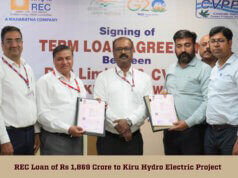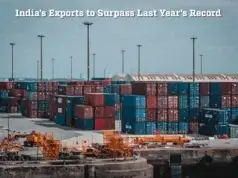The government was aware that infrastructure projects often suffered from lack of funding or were subject to many conditions by the lenders before funding. As a result, the government had directed the lenders to take ‘assets’ into account for funding projects. The government was also urging the development of maintenance-free roads which initially may cost a little more but in the long run was much more economical. This was stated by Oscar Fernandes, Minister of Road Transport and Highways, in his inaugural address at Excon 2013, South Asia’s biggest construction equipment exhibition organised by the Confederation of Indian Industry in Bengaluru recently.
The minister highlighted that time management was a crucial factor in efficient project implementation and all large infrastructure projects should have a project management system for speedy implementation. “It is a very poor management if a project of three years takes 10 years to complete. Speedy management also makes a project economically viable and profitable,” he said.
Electronic tolling was another area where the trial was going on even as latest technology was establishing contacts with the toll booth almost a kilometre away, for the toll gate to open. This would help overcome major pileup of traffic at toll gates, the minister said.
At present, the government has started work on several new infrastructure projects including three airports, two ports, an elevated rail-corridor in Mumbai, and almost 6,000 miles of new roads. The government is also planning to build expressways through innovative financing models.
“We sincerely believe that there is a need to strengthen PPP in the road sector which would act as a critical precursor for sustaining the growth momentum for the economy,” Fernandes said.
Major challenge
In his address, S. Gopalakrishnan, President, CII, said that Excon this year had attained new heights with 17 per cent growth in number of participants. He pointed out that the pace of growth in infrastructure in India had not kept pace with demands and it was a major challenge for the country. Highways, modern bridges, world-class airports, reliable power, and clean water were in desperately short supply. He also highlighted that infrastructure development was a critical enabler for economic growth as the lack of it impeded GDP growth rate by 1-2 per cent per annum.
Gopalakrishnan was of the view that industrial corridors would play a key role in overall development by removing bottlenecks for freight movement between the industrial regions and major ports of the country. CII had been engaging with the central and state and other stakeholders to work towards making PPP one of the important means to increasing investment in Indian infrastructure, he added.
Vipin Sondhi, Chairman, Excon 2013, said that the government had taken several steps in the last 12 to 18 months to provide a fillip to the infrastructure sector and he mentioned two important ones: setting up a cabinet committee on investment to de-bottleneck and fast track some of the big ticket infrastructure projects. But unfortunately the impact was still not felt, he noted.
In India, construction is the second largest economic activity after agriculture. Construction accounts for nearly 65 per cent of the total investment in infrastructure and is expected to be the biggest beneficiary of the surge in infrastructure investment over the next five years. “The growth of India’s construction equipment industry is directly linked to the growth of the country’s economy, since it is driven by increased investment in infrastructure and related sectors,” Sumit Mazumder, Vice President, CII, said.











